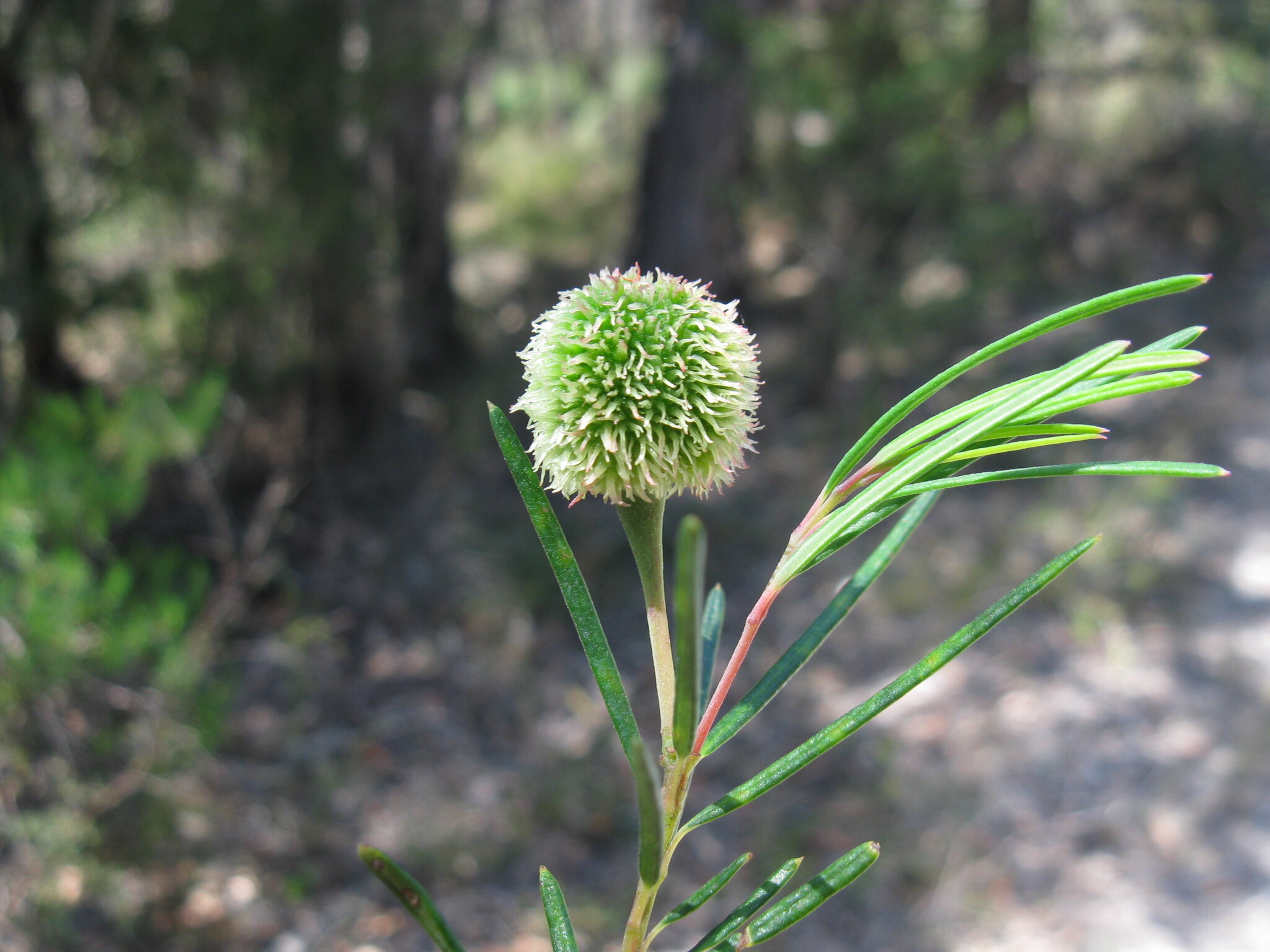
From the Latin ricinus — a tick, and the Greek karpos — fruit, alluding to the similarity of the fruit to those of Ricinus.
Subshrubs or shrubs, evergreen, perennial, male and female flowers on the same plant; stems and foliage without latex. Indumentum of simple, multicellular hairs. Stipules absent. Leaves alternate, stalked, unlobed, penninerved, without glands; margins entire. Inflorescences terminal or appearing axillary, with solitary or clustered flowers. Male flowers stalked; calyx lobes 4-6, edge to edge, fused at base; petals 4-6; disk present; stamens numerous, filaments fused into column. Female flowers stalked; calyx lobes 4-6, edge to edge, shortly fused at base; petals 4-6; disk present; ovary 3- chambered, ovules 1 per chamber; styles 3, shortly fused at base, divided into 2. Fruits capsular, dehiscent, 3-lobed, surface smooth. Seeds cylindrical, carunculate, arilloid.
The genus is currently under revision.
About 15 species endemic to Australia. 3 species are commonly cultivated.
Seeds.
Calyx and corolla with 4-6 parts; stamens numerous, filaments fused into column.
Source: (2002). Euphorbiaceae. In: . Horticultural Flora of South-eastern Australia. Volume 3. Flowering plants. Dicotyledons. Part 2. The identification of garden and cultivated plants. University of New South Wales Press.
